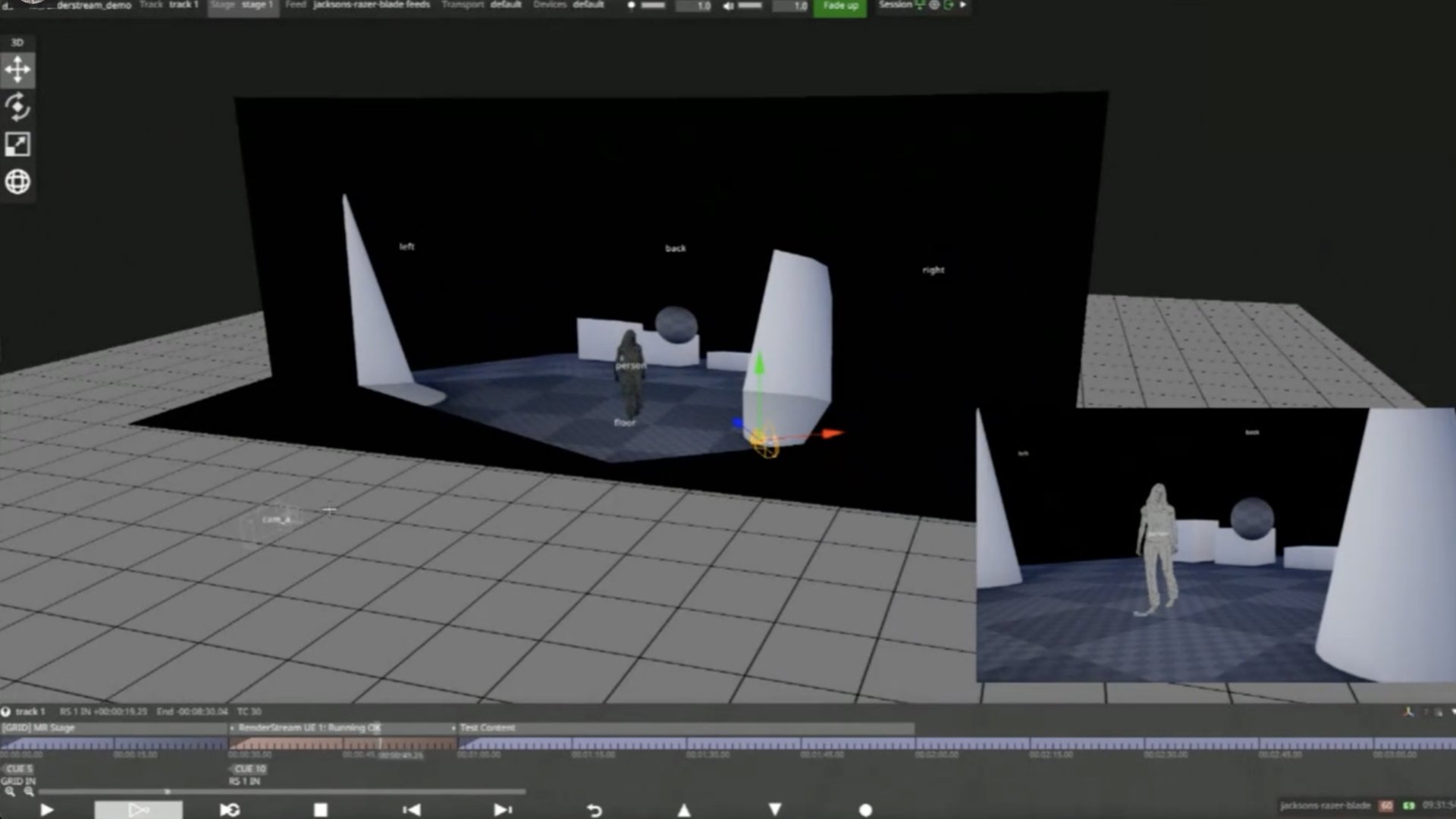
How it all started.
It was Fall 2021, and my roommate Cali and I were talking about our thesis plans. We’re both graduate students in the same department at UT-Austin. Her concentration is costume technology—mine’s integrated media design.
Cali had decided to do a lecture presenting her research on hyper-nostalgia in costume, but she wanted it to be something more. Something powerful. Something nobody had ever seen before.
She wanted audiences to be stunned.
That’s where I jumped in.
Being my roommate throughout 2020, Cali had seen me nerd out over a bunch of XR music performances during the pandemic. I had been learning Unreal and disguise, and wanted to dig my heels into the XR/Virtual Production workflow. I also saw potential for using XR/VP in education, an untapped market to my knowledge.
We decided to produce the lecture in XR. I knew the software, and gathered a team of fellow graduate students to make it work: A disguise technician, a 3D animator, and a lighting designer.
And now we’re rearing to get started.
So here’s the pitch.
The pandemic has caused much of higher education to re-evaluate teaching modalities for large courses, resulting in a new breed of class: the Synchronous Massive Online Course (SMOC). But, despite their growing popularity, SMOCs present a challenge when engaging students—many are structured as webinars with little interaction.
As a media designer/programmer and a graduate student with teaching experience, I have vested interests and skills in both XR/VP and education.
I think XR/VP can help to solve this problem.
What I’m proposing is two-fold:
1. An upper-division college lecture given in XR.
2. A study of XR as a lecture modality (vs. Zoom and in-person).
This shoot will serve a measurable and replicable proof-of-concept for a Virtual Production-based workflow for universities. It can also serve as materials that Epic, disguise, and other studios can use to pitch Virtual Production as a modality to universities.
Upon completion of the study, its outcomes/materials will be made publicly accessible to individuals, studios, and universities interested in replicating the workflow.

I know the tech.
I’ve worked closely both with disguise and Unreal Engine in production settings.
I’m on a journey toward learning both better, but I know them well enough to teach the basics to undergraduate students. This is why I’m interested in exploring both further—to gain mastery of both tools.
This is a lecture I gave to an upper-division undergraduate class interested in video production installation work. It’s a high-level introduction to XR and Virtual Production.
But I’ll need some help to get there.
I estimate that—with technology and travel costs—the cost of production (excluding the rental of an XR stage) will be in the ballpark of $20,000. I’m able to cover $6,000 of it through a fellowship provided by UT-Austin. For the rest, I’m currently searching for funding partners.
That’s where Epic comes in.
Epic Games and disguise are both currently investing heavily in their XR/Virtual Production workflows, and have both made it central to their business models.
Epic is also expressly interested in projects that are open-source and contribute to the greater community of developers using Unreal Engine. I believe a project like this, establishing a replicable turnkey workflow for higher ed, would contribute to that mission. That’s why I’m asking Epic to fund $15,000 of this project through their Megagrant program.
XR and Virtual Production workflows have now been introduced in a variety of industries: TV shows, live concerts, awards shows, corporate keynotes, and film among others.
But there have been no lectures, TED Talks, or universities (to my knowledge) that have used XR/VP tech.
